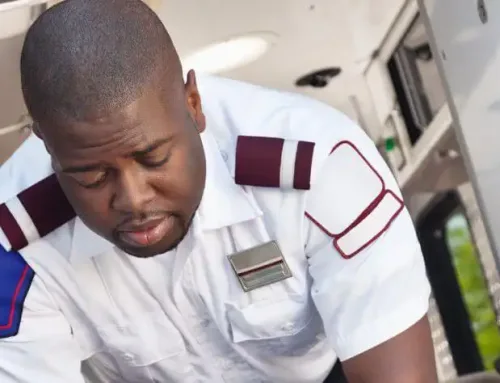How Long Does It Take to Get a Physician Assistant Degree? A Timeline
How long does it take to get a Physician Assistant degree? If you’re considering a career as a PA, you’re likely wondering about the timeline. The path to becoming a licensed PA involves completing a bachelor’s degree, a master’s PA program, and hands-on clinical training, making it a structured yet rewarding journey.
With high job demand, strong salaries, and the ability to provide direct patient care, becoming a PA is an attractive option for many healthcare-minded students. But the time commitment varies depending on your undergraduate path, healthcare experience, and program choice. Let’s break down the typical PA school timeline and what you can expect along the way.
Step 1: Earning a Bachelor’s Degree (4 Years)
Before applying to Physician Assistant (PA) school, you’ll need to complete a bachelor’s degree with specific science prerequisites. Choosing the right undergraduate major can make a huge difference in how smoothly you meet PA school requirements while gaining relevant clinical experience.
Choosing the Right Undergraduate Major
PA schools don’t require a specific major, but they do expect strong science coursework and direct patient care experience. Here are some of the best options:
- Health Sciences: Covers biology, chemistry, anatomy, and patient care, making it one of the most well-rounded choices for pre-PA students.
- Biology or Pre-Med: Provides a solid foundation in medical sciences, but may lack healthcare experience unless supplemented with patient care hours.
- Kinesiology or Exercise Science: Great for students interested in sports medicine, rehabilitation, or orthopedics.
- Nursing: Allows students to work in healthcare before PA school, gaining valuable patient care experience while completing prerequisites.
Completing PA School Prerequisites
Regardless of major, PA programs require specific coursework. The most commonly required classes include:
- Anatomy & Physiology: Two semesters covering human body structure and function.
- Biology: General biology and microbiology for understanding cellular processes and infectious diseases.
- Chemistry: General, organic, or biochemistry depending on program requirements.
- Psychology & Behavioral Science: Essential for patient interactions, mental health understanding, and communication skills.
Many students take these courses during undergrad, but those who major in non-science fields may need to complete additional prerequisites after graduating.
Gaining Clinical Experience During Undergrad
PA schools expect applicants to demonstrate hands-on patient care experience before applying. Most programs require between 500 and 2,000 hours of direct clinical work, making it essential to start early.
Some of the best entry-level healthcare jobs for pre-PA students include:
- Medical Assistant (MA): Works in clinics and private practices, assisting with patient exams and procedures.
- Emergency Medical Technician (EMT): Provides hands-on emergency care, building strong decision-making skills.
- Certified Nursing Assistant (CNA): Offers direct patient interaction in hospitals, nursing homes, and rehab centers.
- Physical Therapy Aide: Supports patients recovering from injuries, a great choice for students interested in sports medicine or orthopedics.
Getting clinical experience early not only strengthens your application but also helps confirm your passion for patient care.
How SCU’s BSHS Program Helps You Get Ahead
At SCU, our Bachelor of Science in Health Sciences (BSHS) is designed to align with PA school prerequisites while offering the flexibility to gain patient care experience. Our program allows students to work while earning their degree, making it easier to build a competitive PA school application.
Plus, our BSHS graduates who meet specific requirements are eligible for a guaranteed interview with SCU’s Master of Science: Physician Assistant Program (PA)—a rare opportunity that gives students a huge advantage in the PA school admissions process.
If you’re serious about becoming a PA, choosing the right undergraduate degree is the first and most important step. With the right coursework, hands-on experience, and a strategic pre-PA plan, you’ll be well on your way to achieving your goals.
Step 2: Applying to PA School (6-12 Months)
After earning your bachelor’s degree and clinical experience, the next step is applying to Physician Assistant school—a process that typically takes six to twelve months. Applications open in April, and early submission increases your chances of getting an interview.
From standardized testing to personal statements and interviews, every part of the PA school application is an opportunity to prove you’re ready for the next level. Here’s how to prepare, apply, and stand out in a competitive applicant pool.
Taking the GRE or PA-CAT (If Required)
Some PA programs require a standardized test, either the Graduate Record Examination (GRE) or the Physician Assistant College Admission Test (PA-CAT). If your target schools require one, plan to study 3-6 months in advance.
- GRE: A general graduate school exam, testing verbal reasoning, quantitative reasoning, and analytical writing.
- PA-CAT: A specialized exam covering biological sciences, anatomy, physiology, and medical knowledge—designed specifically for PA applicants.
Scoring well on these exams can help offset a lower GPA and strengthen your overall application.
Submitting CASPA Applications
Most PA schools use CASPA (Centralized Application Service for Physician Assistants) to process applications. The portal opens in April, and because many programs have rolling admissions, applying early can improve your chances of getting an interview.
A strong CASPA application includes:
- Official transcripts and prerequisite coursework
- Clinical experience hours
- Letters of recommendation (from healthcare professionals or professors)
- A compelling personal statement that highlights why you want to be a PA
PA School Interview Process
If your application stands out, you’ll receive an interview invite—most commonly between August and February. PA programs want to see critical thinking, patient care experience, and strong communication skills in candidates.
Common interview formats include:
- Traditional one-on-one interviews
- Multiple Mini Interviews (MMIs)—a series of short scenario-based interviews
- Group discussions and ethical case questions
Preparation is key—practicing with mock interviews and real-world healthcare scenarios can help you feel more confident on interview day.
Step 3: Completing PA School (2-3 Years)
PA school is where classroom learning meets hands-on experience, turning students into highly trained healthcare providers. Over two to three years, students transition from intensive coursework to real-world patient care, preparing for a career that blends medical knowledge, clinical skills, and compassionate care.
Understanding how PA programs are structured helps students prepare for the challenges ahead. Here’s a breakdown of what happens in PA school, from the first lecture to graduation day.
PA School Structure
PA programs follow a structured timeline, beginning with classroom-based learning before moving into clinical rotations.
Didactic Phase (12-16 Months)
The first half of PA school is spent in lecture halls, labs, and simulation centers, covering key medical sciences and professional skills, including:
- Advanced Anatomy, Physiology, and Pathophysiology Understanding how the body works in health and disease.
- Pharmacology & Clinical Medicine Learning how medications work and how to diagnose and treat patients.
- Medical Ethics & Patient Communication Developing strong decision-making and bedside manner.
This phase builds the scientific foundation necessary to diagnose, treat, and manage medical conditions effectively.
Clinical Rotations (12-16 Months)
Once coursework is complete, PA students apply their knowledge in real-world settings, working alongside physicians, PAs, and healthcare teams. Rotations include:
- Primary Care & Family Medicine Managing general health concerns and chronic conditions.
- Emergency Medicine Treating urgent medical conditions in fast-paced settings.
- Surgery & Orthopedics Assisting in procedures and post-surgical care.
- Pediatrics & Psychiatry Understanding medical and mental health care for specialized populations.
These rotations provide practical training across multiple specialties, helping students discover which fields they may want to pursue after graduation.
PA School Graduation & Degree Earned
After completing all coursework and clinical requirements, students graduate with a Master of Science in Physician Assistant Studies (MSPAS). This degree qualifies graduates to sit for the PANCE (Physician Assistant National Certifying Exam)—the final step before officially practicing as a PA.
Accelerated PA School Pathways
Some students fast-track their education with accelerated PA programs that reduce overall study time.
- Three-year PA programs allow students with extensive healthcare experience to move through training faster.
- Direct-entry PA programs combine a bachelor’s degree and PA program, allowing students to become PAs in five to six years instead of the traditional seven to eight.
PA school is intensive but rewarding, designed to prepare students for patient care as quickly and effectively as possible. With rigorous training, real-world experience, and expert mentorship, graduates leave ready to make an immediate impact in the medical field.
Step 4: Passing the PANCE & Getting Licensed (3-6 Months)
After completing PA school, there’s just one major step left before becoming a practicing Physician Assistant—passing the Physician Assistant National Certifying Exam (PANCE) and obtaining state licensure. This final stretch typically takes three to six months, combining intensive exam prep with the licensing process.
The PANCE isn’t just another test—it determines whether you’re ready to diagnose, treat, and manage patients in a clinical setting. Here’s how to prepare, pass, and officially step into your career as a certified PA.
Preparing for the PANCE
The PANCE is a 300-question multiple-choice exam designed to test medical knowledge and clinical decision-making. Most students start studying 3-4 months before exam day. A strong study plan includes:
- Reviewing high-yield topics such as cardiology, pulmonology, and infectious disease—which make up the bulk of the exam.
- Taking full-length practice exams to simulate real test conditions and build endurance.
- Using trusted study resources, such as PANCE prep books, question banks, and review courses.
Scoring well requires both knowledge and test-taking strategy, so practice and repetition are key.
Getting Licensed & Ready to Practice
Passing the PANCE is only part of the process—every PA must also apply for state licensure before they can officially begin practicing. This involves:
- Submitting an application to your state medical board.
- Obtaining a National Provider Identifier (NPI) number.
- Applying for DEA registration (if prescribing controlled substances).
Some states may have additional requirements, such as jurisprudence exams or background checks. Once licensed, PAs can start working in hospitals, clinics, or specialty practices—finally putting years of education and training into action.
The PANCE and licensing process mark the finish line of PA education, leading to a rewarding career filled with patient care, medical collaboration, and lifelong learning.
Step 5: Optional Specializations & Residency (1+ Years)
Becoming a Physician Assistant doesn’t mean your education ends with certification. Many PAs choose to specialize in a particular area of medicine, whether through formal residency programs or on-the-job training. Specializing can lead to higher salaries, advanced skills, and greater career opportunities in competitive fields.
For PAs looking to deepen their expertise, residencies and continuing education provide a structured way to refine skills, gain hands-on experience, and stay ahead in an ever-evolving healthcare landscape.
Pursuing a PA Residency for Specialization
While not required, PA residencies offer a fast-track to specialization by providing structured, immersive training in high-demand fields. These programs typically last 12-24 months and are available in specialties such as:
- Emergency Medicine (12-18 months): Prepares PAs to handle critical care cases, trauma, and acute conditions in fast-paced settings.
- Surgery (12-24 months): Provides operating room experience, post-surgical care training, and advanced procedural skills.
- Dermatology (12 months): Focuses on medical and cosmetic dermatology, including skin cancer screenings and laser treatments.
PA residencies are competitive, but they offer intensive training that can open doors to high-paying and specialized career paths.
Continuing Education & Career Advancement
To maintain certification, PAs must renew their credential every 10 years and complete 100 hours of Continuing Medical Education (CME) every two years.
Ongoing education ensures that PAs stay updated with medical advancements, new treatments, and emerging technologies in their field. Many PAs also pursue additional certifications in areas like orthopedics, cardiology, or pain management, further expanding their scope of practice and career opportunities.
For PAs looking to maximize their potential, specialization and continued learning provide long-term growth and professional fulfillment in an ever-evolving medical field.
Planning Your PA Career: What Comes Next?
So, how long does it take to get a physician assistant degree? The journey typically spans six to seven years, from earning a bachelor’s degree to completing PA school, licensing exams, and certification. Every step—whether choosing the right undergraduate major, gaining clinical experience, or passing the PANCE—builds the foundation for a rewarding healthcare career.
At SCU, our Bachelor of Science in Health Sciences (BSHS) is designed to set students up for PA school success, with prerequisite coursework, flexibility, and a direct pathway to a PA program interview. If you’re ready to take the next step toward becoming a Physician Assistant, explore our program, review admissions, and apply today.
FAQs
How long does it take to get a Physician Assistant degree?
It usually takes six to seven years to become a PA. You’ll need four years for a bachelor’s degree, two to three years for PA school, plus a few months for licensing exams and state certification before officially practicing.
Can I become a PA faster through an accelerated program?
Yes! Some direct-entry PA programs combine a bachelor’s and master’s degree into a five-to-six-year pathway. Other accelerated PA programs shorten coursework for students with extensive healthcare experience.
Do I need a specific bachelor’s degree to apply to PA school?
Not necessarily, but you need to complete PA school prerequisites like biology, chemistry, anatomy, and psychology. Many students choose Health Sciences, Biology, or Kinesiology to meet these requirements.
Is PA school harder than medical school?
PA school is intense but shorter than medical school. The coursework is condensed into two to three years of fast-paced learning, covering the same medical foundations as med school but without residency requirements.
Does SCU offer any advantage in the PA school admissions process?
Yes! BSHS graduates who meet specific requirements are given the opportunity to interview with SCU’s Master of Science: Physician Assistant Program (PA)—a huge advantage in the competitive application process.
Related Posts





